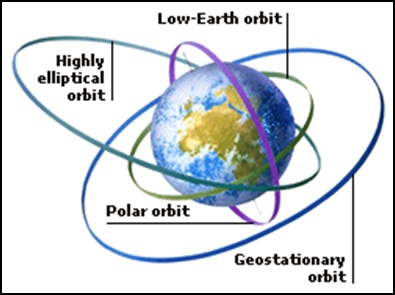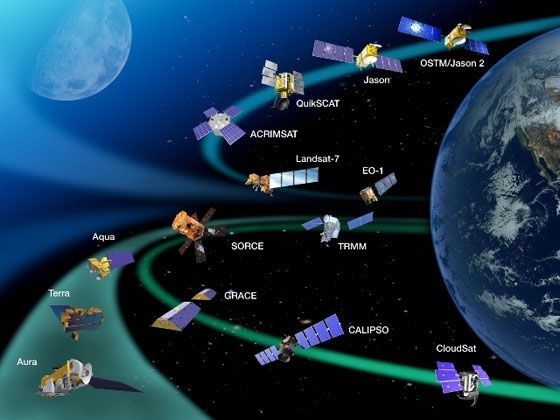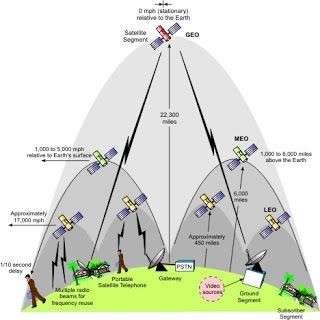Artificial satellites (Part 4 Last)
In previous lecture we briefly discuss about 5 satellites their purpose and in last lecture we discuss the Satellite launches. In today’s lecture we will discuss about the satellite orbits and Satellite required power during its operation.
Satellite Orbits
Orbits are the circular way in which things are moving. The orbits in which satellites are moving are called Satellite Orbits. Orbits are of two types elliptical and circular. Some satellites use elliptical in which the satellite’s distance from Earth is no constant and some satellite uses round orbits, in round orbits radius is constant. The defining characteristics of an orbit are its shape, its altitude and the angle it makes with the Earth’s equator. A satellite’s controllers choose an orbit with a particular combination of shape, altitude and angle that will best serve the satellite’s mission. Satellites pass over different ranges of Earth’s latitude depending on the angle of their orbits with respect to the equator. Some satellites orbit along the equator. The altitude of an orbit determines how long the satellite takes to circle Earth and how much of the planet is visible to the satellite at one time. Most satellites move counterclockwise around Earth and some satellites move clockwise around Earth as seen from the North Pole.

Sputnik 1 was the first artificial satellite in the Earth orbit. Spuntnik 1 was Built by the Soviet Union and launched on 4 of October, 1957. Sputnik was having elliptical orbit, ranging in altitude from 225 to 950 km. Sputnik 1 was working only for 21 day and brad cast a steady signal of beeps. He burned up in Earth’s atmosphere on 4 January, 1958.

Power
After the Satellite launch more important thing is power for the satellite working which is required till the time when its mission not complete, that can be extend to ten years or more. The most common power source Earth-orbiting satellites is a combination of solar cells; with a battery backup solar cells need to be large enough to provide the power that the satellite requires. Solar cells are often mounted on wing panels that can unfold from the body of the satellite after it reaches its final orbit. Batteries provide power to the satellite when the solar panels are not deployed or sunlight does not reach the solar panels.
Satellites are very important in now a days because to days communication is very strong and very strong due to the latest communication system. In this system satellite plays a vital role. As we study different type of satellite which have their own specific work.
For example if we take the example of Navigation Satellite it give use the pin point location of any object within the Earth and it guide us to reach our required destination. On the other hand if we take the example of weather Satellite that give us the update of whole world weather. I today’s life our maximum communication is due to the satellite.

In short Satellite is very important in our daily life and make our life comfortable.



